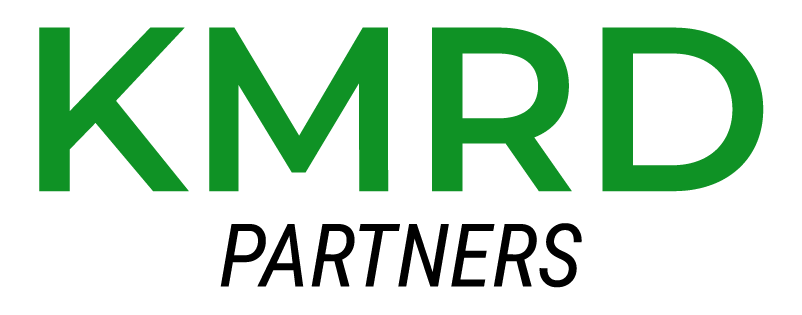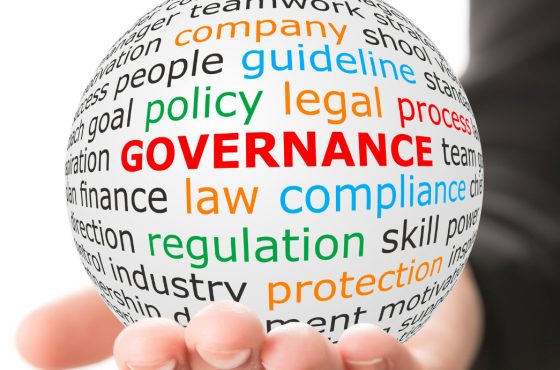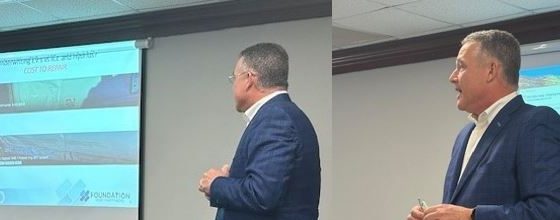Nonprofit Insurance Needs
Nonprofits face a broad array of risks. Securing the proper insurance coverage is vital to protect the people and assets that support the organization in fulfilling their mission.
There are many challenges nonprofits of all sizes must face associated with operations, fundraising, public relations, volunteers, and more. There are several types of nonprofit insurance policies that should be considered to guard against risk. Below, we describe the most important insurances for nonprofits should consider purchasing.
Directors and Officers Insurance
The board of directors serves an important function in any nonprofit, and even the best are capable of making mistakes that can put the entire organization at risk. Directors and Officers (“D&O”) Liability coverage offers protection to board members and officers by transferring risks for activities and actions to insurance.
D&O insurance coverage provides protection to these individuals and the group in the event an employee, client, supplier, beneficiary or other individual or group sues the nonprofit, along with directors and officers, for common law failures of management, control and loyalty.
See also: KMRD Partners Receives Award for Growth and Innovation
While a corporation by definition offers a degree of personal protection against liability to directors and officers, many nonprofits choose to offer additional protection to key members of the executive team.
Related nonprofit insurance questions to consider:
- Does coverage include the Executive Director and/or past Directors?
- Is defense cost outside the limit?
- Is the limit sufficient to attract new executives or board members?
- Do the By Laws secure Director and Executive Director against legal liability?
- Does coverage include Fiduciary Liability cover.
- Does the form also include Employment Practices Liability Insurance (EPLI)?
- Does it include a Wage & Hour defense cost provision?
General Liability
Also known as a Commercial General Liability or CGL, General Liability insurance protects a nonprofit’s assets and pays for obligations incurred if someone gets hurt on its property. A visitor or client slipping on a wet floor is an example of a common covered accident. The CGL policy also protects a nonprofit’s assets and pays for obligations regarding property damages to a third party caused by the nonprofit or any of its employees. CGL covers the cost of legal defense and any settlement or award.
See also: KMRD Partners Ranks High in Customer Service
General Liability Insurance for nonprofits can also protect against liability as a tenant if the nonprofit causes damage to a rental property, such as by fire or other covered loss. Finally, General Liability insurance can also cover claims of false or misleading advertising, including libel, slander and copyright infringement.
Related nonprofit insurance questions to consider:
- Does existing coverage include personal injury?
- Does existing coverage include Employee Benefits Liability?
- Do the named insureds cover employees and volunteers?
- Does the GL extend to allegations of Abuse and Molestation?
- What about special events? Does coverage need to include liquor liability?
Property Insurance
Many nonprofits own buildings, office equipment and other property that must be insured in case it is damaged or destroyed. Property insurance transfers risk if a nonprofit loses all or a portion of its assets in a fire, earthquake, vandalism, storm or similar catastrophic property loss event, whether the nonprofit owns or rents the space it occupies.
Want to understand where your nonprofit insurance policy exposures are? KMRD can help.
While basic property insurance policies will typically cover the following items, a nonprofit should check with its trusted insurance broker prior to an insurable event. It should also confirm its policy will cover the full replacement value of lost or damaged property, rather than paying market value as a used good immediately prior to the damage.
The four major types of property coverage for nonprofits include:
- Building and Contents Coverage – Here, the coverage available for nonprofit organizations is the same as that offered to corporate commercial accounts.
- Crime Coverage – A crime policy is generally a package of policies that protect an organization against intentional theft by insiders, as well as the theft of assets by third parties.
- Workers’ Compensation – Workers compensation insurance protects employees and business from work-related accidents, illnesses, and death.
- Business Interruption – Business interruption and extra expense policies reimburse an insured for the loss of net income plus expenses during a period when the insured cannot operate normally due to damage or destruction of property.
Related nonprofit insurance questions to consider:
- Do nonprofits keep clients’ property in their Care Custody and Control?
- If a nonprofit owns their building do they have Ordinance/Law cover?
- How do they deal with equipment breakdown?
Auto Insurance
Auto insurance for nonprofits will transfer the risk for injuries a driver causes to other people or property while carrying out the nonprofit’s activities, whether these vehicles belong to the individual or the nonprofit. It should be noted, the state in which an organization is registered may require a minimum amount of coverage. Check to determine if state law also requires additional auto insurance, including personal injury protection and uninsured/underinsured motorist coverage.
Related nonprofit insurance questions to consider:
- Is there non-owned and hired car coverage?
- What are the risk management procedures around driving?
- Are Motor Vehicles Records checked? Is there a “pull” record?
- Does the employee handbook reference acceptable minimal insurance limits?
Product Liability Insurance
Nonprofits sometimes manufacture and/or sell products to raise funds. Girl Scout cookies are probably the most well-known example. Product liability insurance will protect a nonprofit from lawsuits filed by customers claiming they were injured by an unsafe or defective product sold during fundraising efforts. Choking hazards, broken teeth and allergic reactions are three examples of potentially worrisome insurable events.
Professional Liability/Errors & Omissions
A Professional Liability insurance policy (also known as “errors and omissions” or “malpractice” insurance) is triggered when an organization or person fails to properly perform his or her professional duties.
In the nonprofit world, this could potentially include health care professionals, attorneys, paralegals and mental health counselors. Because these professionals are expected to possess experience, technical knowledge or training in their particular area of expertise, they are also expected to perform the services for which they were engaged according to standards of conduct established for their professions.
If a professional services individual or organization either chooses to or is unable to use the skill level a client should be able to reasonably expect, they can be held legally responsible for harm caused to another entity.
A nonprofit should purchase a professional liability insurance policy if any of the following applies to its:
- The nonprofit organization provides a professional service or represents its services in this manner
- The nonprofit supplies advice to clients on a recurring basis
- The nonprofit is requested to have professional liability insurance as a requirement to signing a contract
- Home-based nonprofits
Related nonprofit insurance questions to consider:
- Is the named insured broadly defined to cover the organization, directors and officers, executive director and volunteers?
- Does the language used broadly define and cover specific mission based activities?
- Is defense cost in addition to the coverage limit?
- Is there coverage for crisis management?
- Is there coverage for Abuse and Molestation?
Sexual Abuse and Molestation
Sexual abuse and molestation is a tragic problem within a wide variety of organizations, nonprofits included. Sexual abuse and molestation coverage can be covered as a stand-alone policy, as a separate section of a package policy, or as an add-on to a professional liability policy.
Cyber Liability
Cyber liability policies may include third party and first party coverages. Third party coverage protects the nonprofit against claims from losses suffered by third parties (donors and clients). First party coverage protects the nonprofit from its own losses. Specific coverages can include: content liability, data loss, system damage, and business interruption.
Umbrella Liability/ Excess Liability
An umbrella policy, like an umbrella, will cover the organization for anything that might fall on it. It “sits” over the other insurance
policies and enhances, or supplements, whatever coverage the organization already has within its other policies.
An excess limits policy provides additional protection to the nonprofit by increasing the limits of the its existing policies. Also called Excess Liability Insurance, this insurance serves to enhance existing liability policies. It offers additional protections that can be accessed when a claim exceeds the limits of other policies – usually general liability, the employers’ liability section of the workers’ compensation policy, and the business automobile policy.
See also: Here’s How Umbrella Insurance Works
There might be circumstances when the dollar amount of the liability incurred exceeds the limits of the other liability policies or the nature of the loss is not insured by the underlying or lower limit policy. This category of insurance includes high-limit legal liability policies intended to cover losses that are not fully insured by other policies.
Related nonprofit insurance questions to consider:
- Is an umbrella policy appropriate?
- Does the Excess Liability also explain/cover Errors & Omissions (E&O) as well as Abuse and Molestation limits?
Workers Compensation / Accident Insurance
These coverages are critical and address injuries to employees and volunteers. Workers comp laws vary widely by state so it’s important to research state laws to understand requirements. In short, workers compensation pays the medical expenses, disability and death benefits for injured workers. Volunteer accident insurance pays for minor injuries to volunteers who are donating their time and expertise to your cause.
Volunteer injuries can be addressed by a standard general liability policy (unless there’s an additional volunteer exclusion added). The volunteer accident policy can help protect your general liability bad claims experience by picking up minor volunteer issues. General liability will not provide coverage for injuries to employees.
A Brief Word About Home-based Nonprofits
Many homeowners’ or renters’ insurance policies exclude coverage of business-related claims. Other policies forbid use of your home for business purposes. This could result in your coverage being limited or rendered void if you run a nonprofit from home.
Play it safe by telling your trusted insurance broker you are running a nonprofit from home and obtain the appropriate insurance for nonprofit coverage prior to an insurable event.
Wherever your business is located, your trusted insurance broker should help negotiate a policy flexible enough to cover volunteers, independent contractors and medical professionals who help to support your nonprofit’s mission.
Contact us below to have a KMRD expert review the status of your nonprofit insurance.
Contact UsSee the KMRD Advantage About KMRD
Note: This content is provided as general background information and should not be taken as legal advice or financial advice for your particular situation. Make sure to get individual advice on your case from a KMRD risk professional before taking any action.




